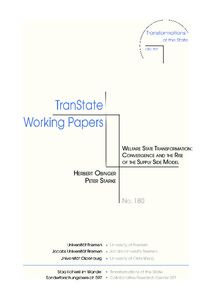Welfare state transformation: convergence and the rise of the supply side model
"This paper describes welfare state transformation in OECD countries since the 1970s against the background of the post-war settlement. Relying on quantitative macro-data and qualitative information from the literature, we show that welfare states have con-verged, especially regarding various s...
| Main Authors: | , |
|---|---|
| Institution: | ETUI-European Trade Union Institute |
| Format: | TEXT |
| Language: | English |
| Published: |
Bremen
2014
Universität Bremen |
| Subjects: | |
| Online Access: | https://www.labourline.org/KENTIKA-19110630124919388129-Welfare-state-transformation-c.htm |
| Summary: | "This paper describes welfare state transformation in OECD countries since the 1970s against the background of the post-war settlement. Relying on quantitative macro-data and qualitative information from the literature, we show that welfare states have con-verged, especially regarding various spending measures, and also to a certain extent in some qualitative policy-making patterns. What has emerged can best be described as the ‘supply-side welfare state’ model, and this overall orientation is reflected in many wel-fare state areas. We differ from earlier prognoses of a race to the bottom by generous welfare states and disagree with the view that a supply-side orientation equals ‘lean government’ in terms of social expenditure. But convergence implies that the space to maneuver has shrunk for policy-makers. The consequences of the 2008 financial crisis for welfare states are difficult to predict; short-term counter-cyclical measures in reac-tion to the crisis highlight the importance of protective buffers in highly integrated economies. Still, some countries have experienced harsh austerity measures since then, and thus the 2008 financial crisis may mark the end of the convergence period described here." |
|---|---|
| Physical Description: | 28 p. Digital |

